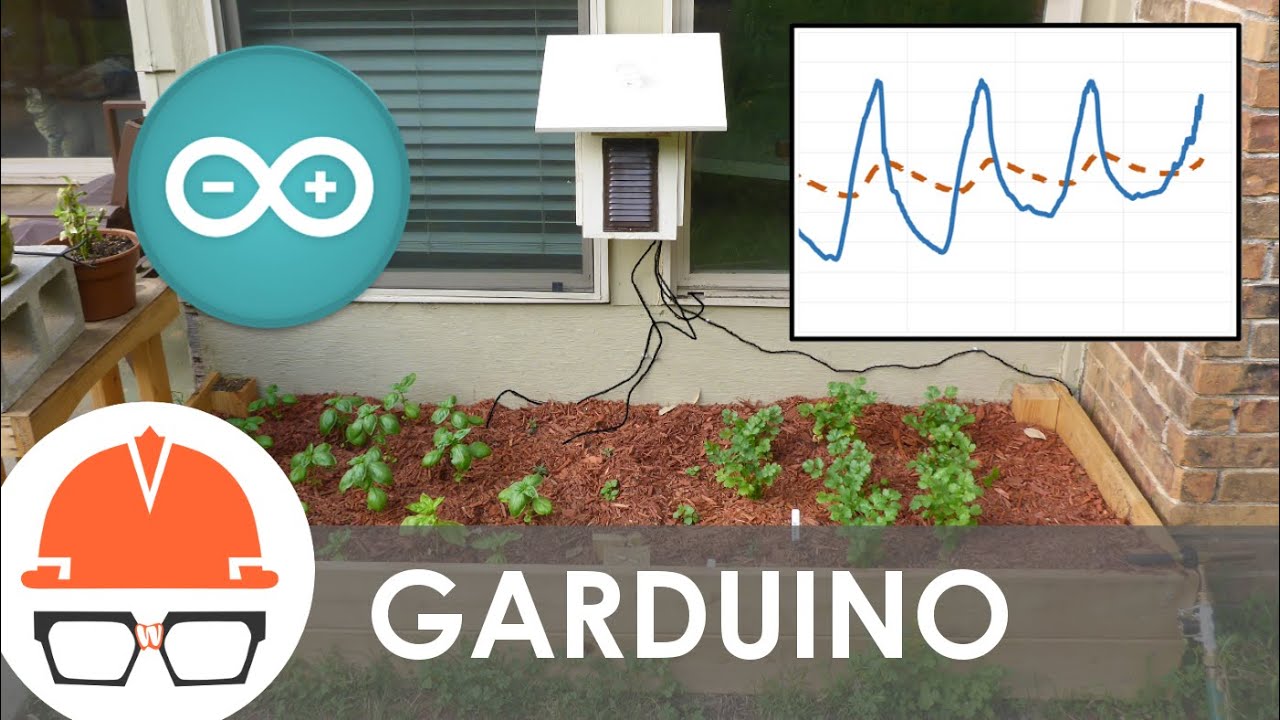Practical Engineering
Gardening in the modern age means making things more complicated and arduous, with electrons, bits, and bytes. Behold: the garduino. My brother got me an arduino microcontroller board for Christmas, which to me was a solution looking for a problem. I finally found the problem: fresh herbs are expensive at the grocery store. But apparently not as expensive as adding a bunch of sensors and electronics to your garden.
Build one yourself or just poke around in the code: https://github.com/gradyh/GradyHillhouseGarduino.git
Thanks to my brother, Graham, for the Arduino board and editing the narration. Thanks to Chris from YouTube channel AvE (https://www.youtube.com/user/arduinoversusevil) for the tips on soil moisture sensors and water hammer. Most of the parts in this build came from http://www.adafruit.com.
Combining microcontrollers and gardening is a really popular idea. I think that’s because gardens have very simple inputs and outputs that are easy to wrap your head around. I guess people (myself included) see a notoriously simple and relaxed hobby and can’t help but feel compelled to overcomplicate it. But just about anyone can connect the dots between “Garden needs water” and “I am not a responsible human being who is capable of remembering to water a garden every day” and realize, “Hey, I can use technology to overcome my personal shortcomings,” and more than that, “I can bend technology to my will and that will feel good to my ego and my sense of self-worth.” After all, no one’s hobby is to buy an irrigation controller off the shelf of a hardware store. Thanks for watching, and let me know what you think.
A few technical details below… If there’s anything I didn’t address, feel free to shoot me a question in the comments.
Moisture sensors that measure the resistance or conductivity across the soil matrix between two contacts are essentially junk. First of all, resistance is not a very good indicator of moisture content, because it is highly dependent on a number of factors which might vary from garden to garden including soil ph, dissolved solids in the water, and temperature. Second, most of them are of poor quality with contacts that easily corrode. For the most part you’d be lucky to get one to last through an entire season. Capacitive sensors are generally more accurate because they are just measuring the change in dialetric properties of the soil which is less sensitive to other environmental factors. They also don’t require any exposed conductive surfaces which means they can last a bit longer in the harsh environment of your backyard. My soil moisture sensor (and soil temperature sensor) came from http://www.vegetronix.com.
The arudino’s analog inputs read voltage, so to use a resistive sensor (like the photoresistor I used to measure sunlight), you have to set up a voltage divider. This is just a really simple circuit which divides the voltage drop between your sensor and a known resistor. You know the current is the same for both, so you can calculate the resistance of your sensor using ohm’s law. The only problem here is that a photoresistor’s relationship to illuminance is log-log, that is to say it spans several orders of magnitude. So if you use a big resistor (5k – 10k ohm) in your voltage divider, your sensor will be sensitive to low light levels, but you won’t be able to tell the difference between a sunny day and an overcast one. Since this thing’s going outside, I used a 100 ohm resistor, which should hopefully give me good differentiation between levels of brightness in the daylight.
Music from incompotech.com
Source




Should have named the title "automatic farm tutorial"
'Have you thought to include a little screen and wifi connection to control remotely?
Hey 🙂
How is the garden growing 5 years in?
Your work is awesome and inspiring, however i found your narration is much more amazing.
"Hey, I can use technology to overcome my personal shortcomings"
SUB
hello every body
I want your opinion in an issue occupying my thinking
I am living in IDLEB northern Syria
I want to establish " socks factory "
the sponser is ready
but I don't have enough information
.
any body can provide me with necessary information please .?
I came across your video while looking to see how people are handling it, I was about to start this kind of a project but was considering using segmented hosing under the bed of my garden stemming from the main hose connection with extra controllers to water sections based on frequency each type of vegetable would require and having a sensor detect rain and compare to google whether forcasts to determine if it should water because it's sunny or wait until a few hours before sun down if there's a chance of rain to not overwater it. And just have a timing system count down from variables getting reset every time it rains or waters it. However that tool you had to check moisture levels in the soil is pretty interesting and I'm thinking of revising my plan with a rain gauge and that sensor to add to it's accuracy is making it control amount of water received as well
Fun video, thanks for uploading
The golf analogy was the most accurate thing I have ever heard
I could plant a simple herb garden, but why keep it simple, this looks like way more fun.
in an attempt to deter mosquitoes (we had an invasion in '14 maybe) i started growing basil. it's a great plant and with trimming it can grow like a 3ft bush.. the birds love the seeds, it smells great all the time and it has not effect in deterring mosquitoes :}:}
*basil tolerates drought and heat quite well, it is not frost resistant.
I feel like my internal monologue narrated this video
This is brilliant! I’m embarking on a very similar project and all your comments rang true!! I could have bought a lifetime supply of tomatoes for what I’ve already spent on Arduino ‘bits’, but where’s the fun in that?!
This is amazing and I’m about to the the same for my tomatoes and peperoni 🤩
Wow re watching this some years later I must say that your videos have improved by an incredible rate!
Also, When are we re-visiting your garden? =)
I appreciate the joke about the BS of LEED certifications
what did you use to power the Arduino ?
Por lo menos pongale subtitulos a eso.
That is a LOT of basil you're growing there… lol
OMG this is so entertaining! When I grow up I wanna be like you!
Good job!